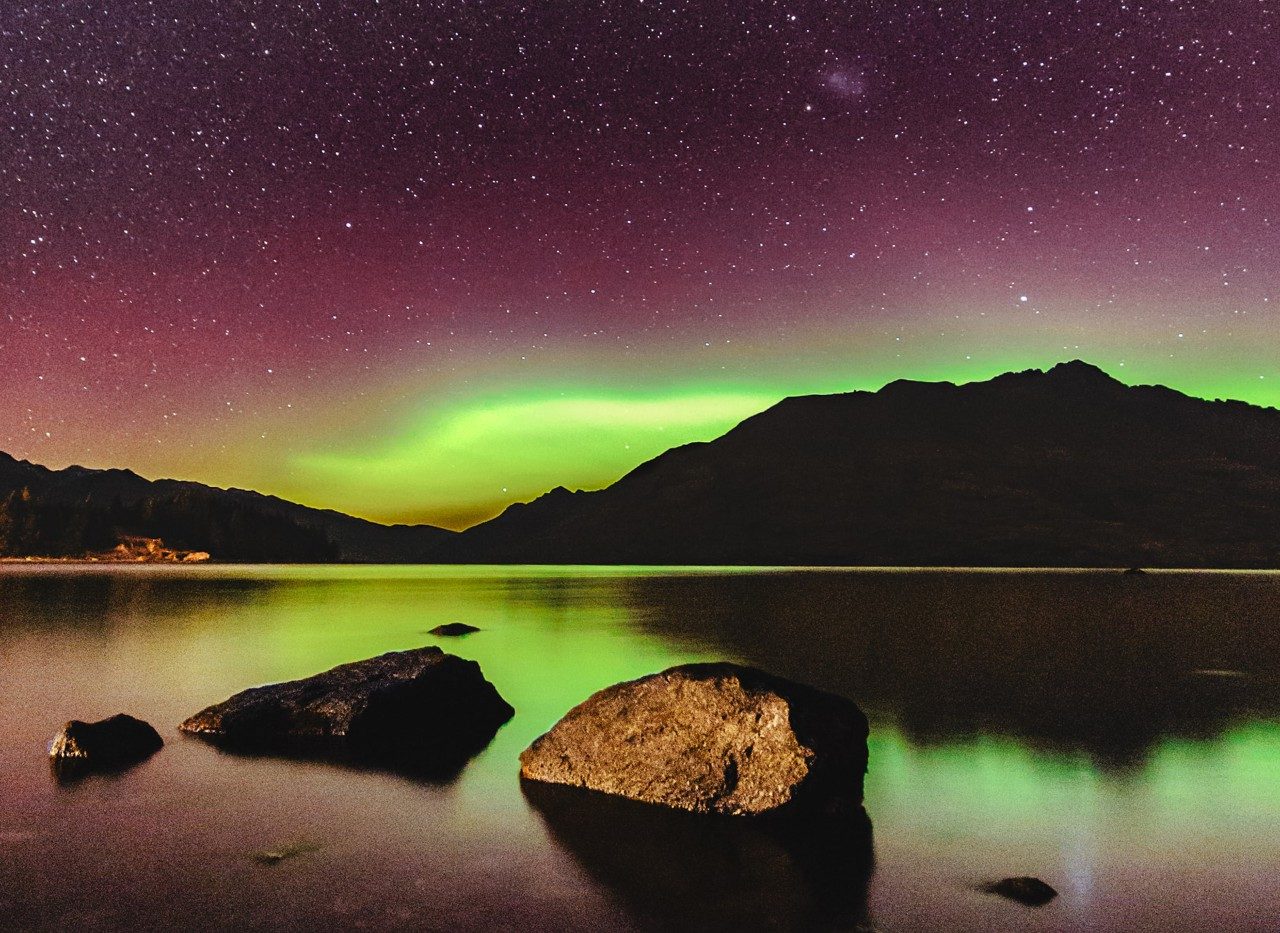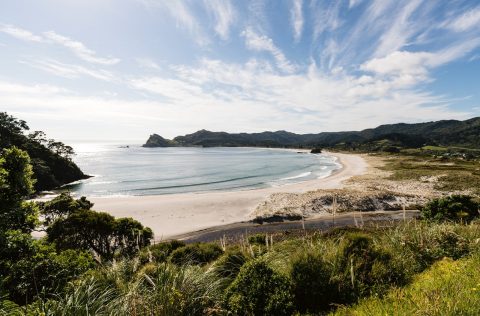Southern Lights: How to See the Aurora Australis in New Zealand

Ever dreamed of seeing the magical aurora australis? Here’s everything you need to know on how to see the southern lights in New Zealand.
Nature’s most incredible lightshow, when shimmering veils of colour pulse across the night sky, is an unforgettable spectacle that’s lured countless travellers to the Northern Hemisphere and the depths of an Arctic Circle winter. But while the aurora borealis (northern lights) gets all the press, its Southern Hemisphere counterpart, the aurora australis (southern lights), is no less amazing.
So what is it exactly, you ask? In basic science-speak, the phenomenon occurs when electrically charged solar particles collide with atmospheric gases. The resulting energy translates into a brightly glowing lightshow. As wildly unpredictable as nature itself, it can last for a matter of minutes and sometimes reappear over several days, producing colours ranging from red and green to yellow, purple or blue.
New Zealand has no shortage of natural attractions and you can add the southern lights to its list of wonders. While we can’t offer any guarantees (thanks, Mother Nature), there are things you can do to improve your chances of seeing the sky during its flight of fancy.
Where to see the lights in New Zealand
You’ve got to go south – very far south – for the best chance of seeing the aurora australis. The closer you are to the southern magnetic pole, the better the likelihood of a celestial encounter to remember. But if you’re not planning to book a cabin on the next icebreaker to Antarctica, New Zealand has some prime spots for aurora gazing. Here are some of our favourites:
Aotea Great Barrier Island

Your chances of seeing those dancing lights are greatly improved on Aotea Great Barrier Island, 4.5-hours by ferry from Auckland, where all 285 square kilometres of the off-grid isle has Dark Sky Sanctuary status. Make an evening of it with Good Heavens Dark Sky Experiences, which takes small groups to Medlands Beach on the island’s east coast to settle into moon chairs with a warm beverage to await the potential cosmic performance, or a twilight tour with Star Treks, which begins with a visit to the Kaitoke hot springs for a soak as the sun sets.
Queenstown (and beyond)
Orion is just one of the Southern Hemisphere’s unique constellations that you’ll have perfect visibility of in Fiordland National Park’s Milford Sound. Take in the stars (and hopefully the aurora) from Fiordland Eco-Retreat, where tours start once the sun slips away and the Milky Way, the Southern Lights and other constellations of Maori significance, such as Matariki cluster, become visible to the naked eye.
Aoraki Mackenzie International Dark Sky Reserve
This 4,367-square-kilometre patch of South Island wilderness, encompassing Mount Cook National Park and the Mackenzie Basin, is the largest dark sky reserve in the Southern Hemisphere. Appreciate the exceptional clarity and lack of light pollution with Dark Sky Project’s two-hour tour from the 1,029-metre summit of Mount John at Lake Tekapo, a three-hour drive from Christchurch. Your visit includes a guided exploration of the stars and then a deep-dive session with 16-inch telescopes. Also in Lake Tekapo is budget-friendly Chameleon Stargazing tours, which includes time spent by a marshmallow-ready fire pit with warming hot chocolates, while a stay at Mount Cook Lakeside Retreat enables access to its onsite Pukaki Observatory, where you can pair aurora hunting with a fine-dining experience.
When to see the lights
The southern lights refuse to stick to a timetable but you should aim for March to September when the nights are longer and darker. Keep an eye on websites such as the University of Otago’s Aurora Australis Alerts, which offer forecasts based on the conditions needed to produce an aurora (a reading of Kp5 or above is a decent indication it’s worth braving the dark and cold – go science!).
The best conditions to view the lights
Pack your puffer jacket: a clear, dark (and most likely very cold) night is the best time to see the southern lights in New Zealand. Light and air pollution will detract from the show so head away from cities and be sure to factor in the lunar cycle, as the brightness of a full moon will upstage the colourful display. When the Land of the Long White Cloud lives up to its nickname, it’s a sign to stay inside by the fire. Auroras occur in the upper atmosphere so any cloud cover will keep the wonderment under wraps.

Start planning now
SEE ALSO: 30 of New Zealand’s Most Beautiful Hidden Gems
Image: Patrick Kovar


